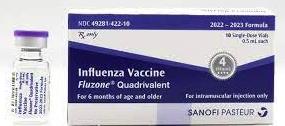The influenza season has started early in Australia with a high incidence rate in the population including children. Each year, scientists at the World Health Organization monitor influenza outbreaks in the southern hemisphere in order to select the strains that should be included in the annual influenza vaccination administered in the E.U. and North America.
 Predictions are affected by a number of variables including evolution of influenza viruses. The incidence rate in a specific area is influenced by the number of susceptible to a given virus strain, weather, social interactions and mobility.
Predictions are affected by a number of variables including evolution of influenza viruses. The incidence rate in a specific area is influenced by the number of susceptible to a given virus strain, weather, social interactions and mobility.
Dr. William Schaffner of the Division of Infectious Diseases at Vanderbilt University Medical Center and the Director of the National Foundation for Infectious Diseases stated, “Looking at this fall we are going to have a special challenge because in addition to urging everyone to get their annual influenza vaccine we are going to have a new updated COVID vaccine that will be available.” He added, “We are awaiting the recommendations of the CDC Advisory Committee on newly approved RSV vaccines that are recommended for the elderly.”
 The World Health Organization recognizes the challenge presented by the “largest continued backslide in vaccinations in three decades” as a result of the COVID outbreak and anti-vaccination misinformation.
The World Health Organization recognizes the challenge presented by the “largest continued backslide in vaccinations in three decades” as a result of the COVID outbreak and anti-vaccination misinformation.
Egg producers and the poultry industry in general should initiate plans to have all employees coming into contact with live birds vaccinated with the available annual multi-valent influenza vaccine. This will reduce absenteeism and possibly prevent a rare recombinant event if a person infected with a human influenza virus comes into contact with a poultry flock infected with an avian strain of influenza.
According to the Centers for Disease Control and Prevention, based on data from 2010 through 2020, human influenza may cause between 10 to 50 million cases in a year with 150,000 to 750,000 hospitalizations and 12,000 to 55,000 fatalities.